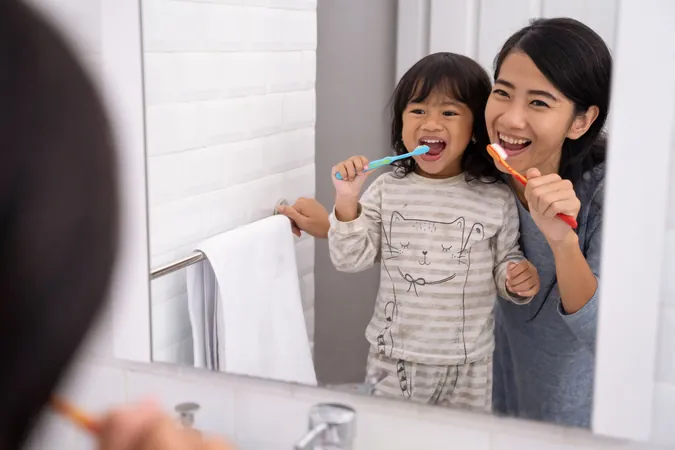
Text Messaging Transforms Children’s Dental Habits, But Does It Curb Tooth Decay?
2025-01-03
Author: Jia
Introduction
In an innovative study published in JAMA Network Open, researchers explored the effects of a bilingual text messaging program aimed at parents on their children's dental health. The findings are notable as they provide insights into promoting better oral health practices among children, particularly those from underserved communities.
Background
Cavities, a prevalent chronic disease in childhood, affect millions of children worldwide, and the disparities in oral health are well documented. The study targeted parent engagement through text messages focused on oral health (OHT) versus child wellness (CWT) to assess whether one approach was more effective in minimizing the risk of dental caries.
Study Framework
“Over 90% of children in the U.S. attend well-child visits, making these appointments pivotal for early intervention against caries,” the authors explained. However, tackling dental health during these visits can be challenging for pediatricians due to time constraints, leaving many parents without essential guidance on oral care.
Utilizing the prevalence of text messaging—around 95% of adults in the U.S. engage with this mode of communication—the research team developed an ongoing and tailored messaging strategy that could effectively reach high-risk families and support positive behavior change.
The iSmile Study
Dubbed "Interactive Parent-Targeted Text Messaging in Pediatric Clinics to Reduce Caries Among Urban Children" (iSmile), the randomized study examined participants during visits at four pediatric clinics in Boston, serving diverse and low-income populations. Caregivers of children under the age of 7 with at least one tooth were recruited for the trial, which spanned from March 2018 to February 2022, including a significant 24-month follow-up period.
During the study, caregivers received messages designed to educate and motivate them regarding their children's dental hygiene. The program utilized interactive, bilingual, and gamified messages, with the OHT topics focusing on increasing preventive dental visits and proper tooth brushing practices, while the CWT messages centered around general reading and child safety.
Results and Findings
Despite the comprehensive nature of the study, the primary outcome—24-month caries increment—did not show significant differences between the OHT and CWT groups. However, key secondary outcomes revealed a positive shift in dental hygiene practices among children whose caregivers received the OHT messages.
Specifically: - Participants in the OHT group were **1.77 times** more likely to meet tooth-brushing guidelines compared to those in the CWT group. - The likelihood of attending preventive dental visits was **1.51 times** greater among the OHT group. - The use of fluoride toothpaste saw a promising increase, with a **1.46 times** higher likelihood among children receiving OHT messages.
Moreover, caregivers reported improved tooth brushing habits themselves, showcasing the ripple effect of engaging parents through effective communication.
Conclusion
While the study did not succeed in its primary goal of reducing cavity increments, the data suggest that appealing text messages might nonetheless play a vital role in decreasing oral health disparities in vulnerable populations. The authors concluded that the integration of low-burden, engaging reminders could be essential in promoting long-lasting changes in oral health behaviors, paving the way for healthier smiles in the future.
This groundbreaking research highlights a crucial intersection between technology and public health, suggesting that simple text reminders could hold the key to fostering better oral health practices among children—and perhaps even reducing the prevalence of cavities in the long term. Will your child’s dental health benefit from a text message? It might just be the simple solution you’ve been looking for!
 Brasil (PT)
Brasil (PT)
 Canada (EN)
Canada (EN)
 Chile (ES)
Chile (ES)
 Česko (CS)
Česko (CS)
 대한민국 (KO)
대한민국 (KO)
 España (ES)
España (ES)
 France (FR)
France (FR)
 Hong Kong (EN)
Hong Kong (EN)
 Italia (IT)
Italia (IT)
 日本 (JA)
日本 (JA)
 Magyarország (HU)
Magyarország (HU)
 Norge (NO)
Norge (NO)
 Polska (PL)
Polska (PL)
 Schweiz (DE)
Schweiz (DE)
 Singapore (EN)
Singapore (EN)
 Sverige (SV)
Sverige (SV)
 Suomi (FI)
Suomi (FI)
 Türkiye (TR)
Türkiye (TR)
 الإمارات العربية المتحدة (AR)
الإمارات العربية المتحدة (AR)